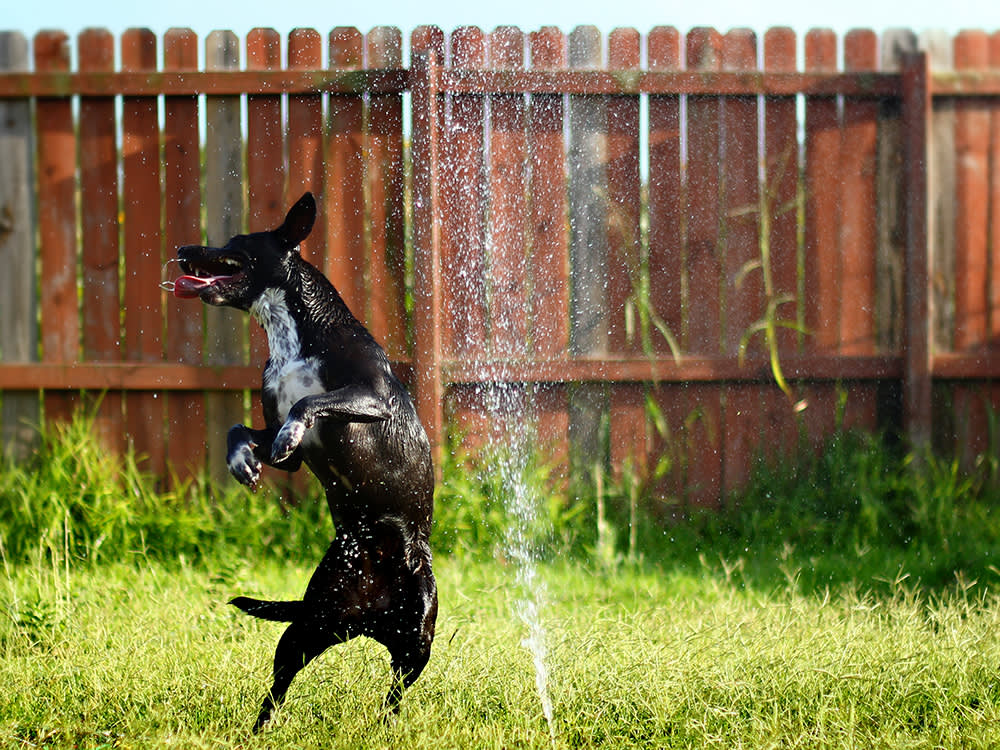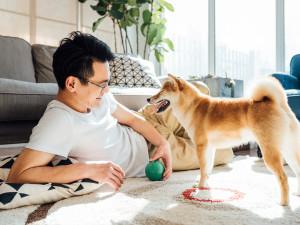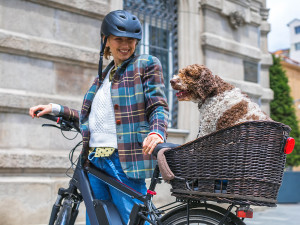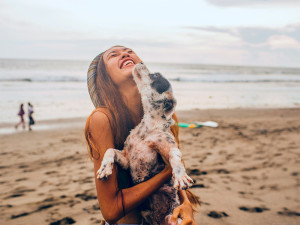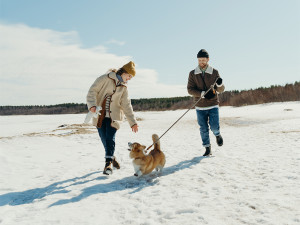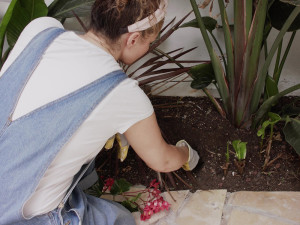6 Ways to Make Your Back Garden a Canine Paradise
Paddling pools aren’t just for kids
If you’re the kind of person who has looked into swapping a flat for a house just to give your dog a back garden, you want to make sure that back garden is perfect. Once you achieve that green space for your pup, it’s time to brainstorm all the ways you and your pal can use it daily.
Hopefully, you’ll be enjoying playing lots of fetch with your dog out there, but there are plenty of other ways to make your garden a fun and relaxing space for both of you. Here’s how.
1. Plant dog-friendly herbs
Herbs can look beautiful in your garden – and some have magical canine powers, like keeping fleas at bay. The oils in the garden herbs below are natural flea repellents:
Fleawort (Erigeron canadense), annual
Fleabane/pennyroyal (Menta pulegium), perennial
Tansy (Tanacetum vulgare), perennial
Wormwood (Artemisia absinthum), shrubby perennial
Rosemary (Rosemarinus officinalis), shrub
Sweet Bay (Laurus nobilis), tree
For even more flea repellent power, cut the branches of the herbs and strip the leaves to line the bottom of a kennel. Or, dry the herbs and leaves and stuff them inside the lining of your dog’s bed, which will naturally discourage fleas through the winter months. Bonus: some of these herbs may discourage ticks, too.
2. Get a dipping pool
What’s more fun than taking a dip with your dog? To create a pool that’s safe and easy to clean, choose a sturdy, moulded plastic paddling pool rather than an inflatable one, which is too easily punctured by sharp claws. Be sure the pool is shallow enough for your dog to get in and out of it easily. (Note: small dogs may find the plastic sides hard to navigate when wet; choose a size that’s safe for your particular dog.)
The best way to disguise a doggy dipping pool is to set it into the ground just like a real swimming pool: dig out the area under the pool so it sits with the rim an inch or two above the soil line. This will protect the rim and sidewalls from breakage as your dog enters and exits. Plus, they’ll be less likely to chew on it, and it will stay in position when empty. The downside with this kind of pool is draining it, which can be done with a simple siphon (you can find one at a DIY shop). Or, when all else fails, bail it out with a bucket!
3. Create a flop spot for your dog
Dogs don’t sweat – they cool off by panting and finding a cold spot to lay in. Many dogs labelled problem diggers are really just trying to keep cool. They instinctively dig nests in shady places to access cooler soil and they sprawl out in them during the heat of the day. In heavy soils, this makes a huge mess – the dirt stains paving, plasters to the dog’s fur and litters the garden with clods.
The solution? Provide your dog with a pit of their own that’s more damp and cool than the flower beds. Give them sand to lie in: it won’t stain or make mud and when dry, it easily falls away from their fur. Keep the sand slightly moist and your dog will prefer that spot over any other place in the garden. You can make a few of them (depending on how big your garden is!) scattered around damp, shady, out-of-the-way spots in the garden. Be sure to wet down the area often in the heat of the summer.
How to make a cool flop spot
Dig a shallow pit that will fit your dog comfortably.
Mix up a bag of concrete and line the pit with a thin layer.
Before the concrete dries, poke a few pencil-sized holes in the bottom for drainage.
Line the depression with at least six inches of clean white playground sand.
Sprinkle with water to the point of dampness.
4. Keep your landscaping toxin-free
Some common landscaping plants are toxic to dogs, including sago palms, azaleas and even lilies. Keep your landscaping dog-friendly by avoiding lethal plants (the Blue Cross has a handy list of ones to avoidopens in new tab).
Chemicals within landscaping materials can also be problematic for dogs. These include snail bait, cocoa mulch, chemical fertilisers, fungicides, herbicides and pesticides. If you must use these products, make absolutely sure that your dog can't get them.
5. Plant a wheat and oat grass dog patch
Wheat and oat grass are good for dogs, in moderation. Your dog will naturally graze on the plants (rather than pawing through your flowers). If you have a small garden, consider planting wheat grass in an outdoor patch. It grows great in low, wide troughs. Most pet suppliers sell the seeds in small quantities. For a sizeable dog patch, save money by purchasing your oat and wheat seed at a health food shop. It’s free of chemicals and ideal for large plantings.
6. Keep foxtails out of your garden
Foxtails are a group of grassy weeds that can be very dangerous for dogs. They have barbs that can penetrate your dog’s fur or skin and stick there until they finally drop off somewhere else. When they turn brown, foxtails become quite stiff and are easily inhaled by dogs. The tips are sharp enough to penetrate the softer parts of the paw, mouth and other sensitive spots. Once inside the body, foxtails can travel through the bloodstream and cause serious injury. Keep your garden free of these weeds by pulling all grasses while they’re still green.
